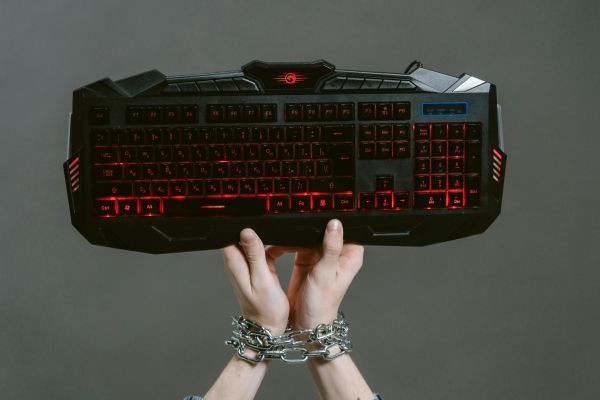These small purchases of microtransactions have become the norm in many modern video games, especially in free-to-play and online multiplayer games.
11/29/24 • 373 Views
These small purchases of microtransactions have become the norm in many modern video games, especially in free-to-play and online multiplayer games. For a long time, these small in-game purchases have been a way developers monetize their games. This has given players the chance to buy cosmetic items, currency, and even advantages in the game. However, while some call this process harmless, others claim it consumes the very essence of what they're playing.
We are going to discuss how microtransactions emerged, their influence on gamers and developers, and whether these microtransactions are killing gaming or have become one of the things that are required in the evolution of an industry.
What Are Microtransactions?
Microtransactions, in simpler words, refer to small purchases with video games made using real cash, although often these kinds of transactions can be completely and fully avoided. Examples are mostly cosmetic items like additional skins or costumes, while one could even buy the ability to accelerate one's way, using the currency to get one specific kind of thing or the very chance to have a particular effect by means of experience boosters or loot boxes.
They are among the key income generators for developers when games they have developed are free to play or have a regularly flowing content update, and in mobile games and live-service games, have been becoming more and more commonplace. Even though much of what's played is still within the one-time purchase model wherein players pay upfront to acquire the full game, microtransactions have become a prime revenue source for developers.
Rise of Microtransactions in Gaming:
Microtransactions are surging over the last ten years, largely because of successes, such as Fortnite, League of Legends, and Candy Crush, which were first of their kind to launch in the market with partial successes, such as Fortnite, when it revolutionized the view around microtransactions. It created a model where players could opt to buy cosmetics while still earning them over time through the game by offering players an avenue to earn exclusive cosmetics and rewards.
More controversy seems to be present here. There are cases in which microtransactions get their criticisms as when in Battlefront II Star Wars and NBA 2K titles, the last two practices used the microtransactions to receive pay-per-play or loot box effects in game progression or winning a game. The results showed continuous debates surrounding this phenomenon of microtransactions being put on the industry.
Beneficial Side of Microtransactions:
While many players and critics have voiced concerns over microtransactions, it’s important to consider their potential benefits as well. In certain cases, microtransactions can improve the gaming experience, offering both developers and players advantages:
Many free-to-play games have to rely extensively on microtransactions to keep their revenue generation intact. This is because they can provide games to players without cost, making it available to more people. Take Fortnite, which gives a battle royale experience for free and monetizes all its contents through cosmetic purchases such as skins, emotes, and battle passes, thus enabling the game to be developed and upgraded without requesting full price.
Ongoing Content Updates: Microtransactions allow developers to update their game continuously with new content. In this way, developers are no longer dependent only on sales at launch and can, instead, leverage the generated revenue to fuel new updates, events, or expansions for the game-a great model for live-service titles like Apex Legends and Destiny 2, which by their nature have to keep running to keep players hooked.
Customization and Personalization: In one of the most commonly accepted ways of microtransactions, one can buy cosmetic items, which enhance the gameplay; in other words, they will have skins or be able to customize a character's appearance with bright, flamboyant clothing. In many people's cases who take pride in playing, it will have tremendous value in their play.
Optional Purchases: Most microtransactions are strictly optional. That means players can pay for more to enhance their experience without having some essential content locked behind a paywall. In games where microtransactions are restricted to cosmetic items or features, the gameplay is left unchanged for those who don't want to spend extra cash.
The Dark Side of Microtransactions:
Although this could be considered as a good thing, microtransactions have been criticized because of the negative impact on games. The most common criticisms are the following:
Pay-to-Win Mechanics: Probably the most controversial feature of microtransactions is how they affect gameplay and progression. Some games allow players to buy benefits such as high-powered weapons, in-game boosts, or better stats, which would give the player an unfair advantage in competitive multiplayer modes. This "pay-to-win" model can alienate players who prefer to rely on skill rather than spending money to level the playing field. A prime example of this issue occurred in Star Wars: Battlefront II, where loot boxes containing powerful items were originally available for purchase, giving players who spent money a significant edge over those who didn't.
Loot Boxes and Gambling Loot boxes are a form of microtransaction where players pay for a randomized selection of items. In games with a young audience, loot boxes have been likened to gambling. Typically, the contents of loot boxes consist of cosmetics, but occasionally, they may contain game-affecting items or currencies. These loot boxes can be actually very problematic in terms of their randomness and how they just keep users throwing money towards the game looking for their rare or powerful items, resulting in ethical issues with further addiction and encouragement of gambling like behavior.
Fragmented Content: Most games now lock up essential contents behind microtransactions or seasonal events, so players can't use everything the game offers without expending extra money. This is sometimes called "content gating," which is sometimes frustrating for those who fail to access limited time content. This can frustrate people, especially since players must spend money just to acquire exclusive rewards that may eventually become available later in the game. This, therefore tends to reduce fun that will be derived playing the game, especially in situations whereby the player is bullied or cornered into the system of payment.
Core Gameplay Disruption. Mixing the game experience with microtransactions may create an illusion that purchases are overshadowing the games. For example, players might be made to delay their gaming because of delays to buy acceleration in levelling or experience boosting. It makes the games seem constructed for the purposes of income generation rather than as game experience.
Is Micro-Transaction Killing the Experience?
The answer to this question is not simple. Although microtransactions are not intrinsically bad for the gaming experience, their implementation has a huge impact on how players interact with a game. Microtransactions can enhance the gaming experience by offering optional content, funding ongoing updates, and supporting free-to-play models when used responsibly. However, when they interfere with core gameplay or introduce unfair advantages, they can negatively affect the experience and alienate players.
Many gamers feel that microtransactions are becoming increasingly predatory, especially in games designed to push players toward spending money to advance. The rise of "loot boxes" and "pay-to-win" mechanics has made the conversation around microtransactions particularly heated, as these elements can create imbalances in multiplayer games and foster a sense of frustration for those who don't want to spend extra money.
Ultimately, that is the decision of developers: balancing the desire to provide valuable content with the need to preserve the integrity of gameplay. Games that respect players and provide value without exploiting them will continue to thrive. Those that focus too heavily on monetization may face the backlash of players and will lose trust.
Conclusion:
It indeed has become part of the modern gaming scenario as developers are allowed to enjoy continuous revenue while providing fresher content. However, the more they are there, the more their harm is considered on the totality of the gaming experience. While microtransactions can actually be value, it only has the possibility of destroying a game's integrity when instead of focusing on the gamers' entertainment, a game concentrates too much profit.
But for microtransactions to continue alive without ruining the whole gaming experience, fairness, transparency, and the choice have to remain in consideration. As long as microtransactions are not intrusive, not destroying core game mechanics, and so on, they could coexist with the game experience—the betterment rather than ruination of the game. The future of microtransactions in gaming would depend upon developers listening to player feedback and keeping a fine balance between monetization and fun.









